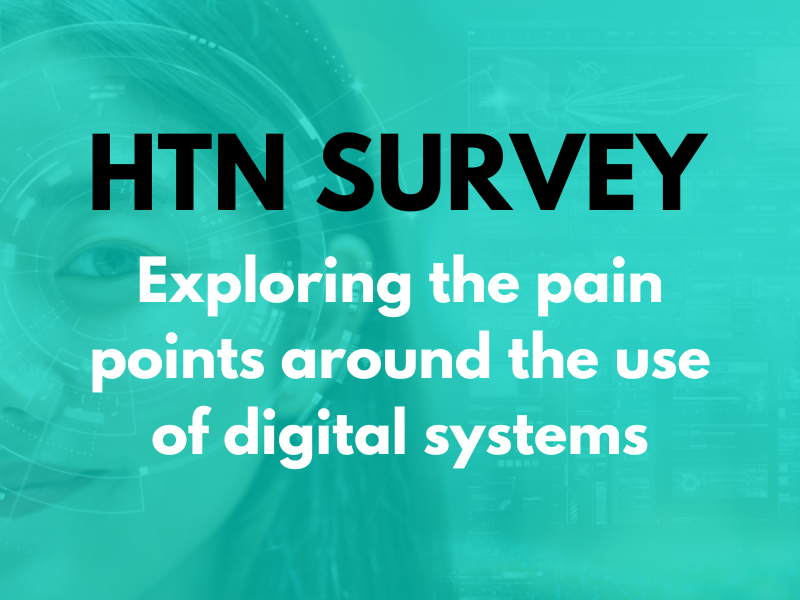The digital health and care directorate in Scotland has issued an update for 2025/26 on its national digital health and care strategy delivery plan, pointing to current status and anticipated delivery dates for work across digital access, inclusion, services, foundations and skills. This follows a number of developments towards a renewed focus, it states, aligning with NHS Scotland’s operational improvement plan.
Over the last year, the directorate highlights its digital inclusion programme, “Connecting to Care”, launched in April 2024 with seven funded projects across Scotland, developing models of digital inclusion to support people in accessing digital services and support. “To date, it has benefited over 3,500 people,” it highlights, “supporting them to be digitally included, develop essential digital skills, and improve their wellbeing”. The Connect Me remote monitoring and self-management service is now available at 50 percent of GP practices, said to save an estimated 400,000 appointments, with plans to consider wider use for more conditions and pathways.
In the past year the directorate notes 35 digital therapeutic treatments are now available across NHS health board areas, and a pilot programme was successfully deployed for a digital theatre scheduling tool across three health boards with plans for national roll-out later in 2025.
On digital access, the minimum viable product for the health service digital front door will be developed for initial launch in December 2025, with national roll-out scheduled for 2026-27 subject to full business case and budget.
For digital services, along with National Services Scotland being commissioned to explore options and deliver the Connect Me remote monitoring pathways service moving forward, the directorate plans to expand the Hospital @ Home service. It shares that commitments made in the operational improvement plan to increase virtual beds to 2,000 and to work to establish pathways offering direct referrals from the ambulance service, flow navigation centres, EDs, and frailty units, will be delivered by March 2026. Work will also be ongoing on scaling and embedding the Near Me video consultation service. The delivery of refreshed technology to support the national screening programme was initially due for delivery in March 2025, but is now marked as delayed due to funding constraints.
A number of digital foundations projects are also marked as delayed, including the implementation of a national GP IT system, due to “unexpected administration” of the supplier parent company in January 2025, with full roll-out expected to be completed in 2026. A new timescale is to be confirmed for HR, payroll, finance, and procurement systems, with a procurement tender issued. Delivery of the first phase of development for the Digital Health and Care Record was due for March 2026, but is now listed as delayed due to its incorporation into wider work to develop elements of the personalised health and care system such as the digital front door. Single sign-on for staff and a technical roadmap for Scotland have also both been delayed.
Projects progressing cover the implementation of a single national laboratory information management system across 12 Scottish health boards, with roll-out expected by 2028. The shift to digital telecare is also on track to be fully completed by December 2025, with 67 percent transferred as of April 2025, and modelling indicating this could save an estimated 30,000 A&E callouts per year. The Microsoft 365 platform is to be optimised, supporting business and clinical operations, with a new four year contract agreed by NSS, and a completion date set for December 2025. NSS is also leading on work around requirements and understanding of how national IT contract services can be transitioned from the current environment to modern infrastructure. Adoption of GS1 standards as part of the implementation of the NHS Scotland Scan for Safety Programme is on track for March 2026.
On digital skills and leadership, the government is to deliver a postgraduate qualification on leading digital transformation in health and care by March 2026. It has completed work on a refreshed programme of digital and data leadership and skills, with a digital and data capability framework and four learner pathways completed in 2024, and AI and cyber security pathways published in March 2025. The capability framework is currently being explored to understand how it can support DDaT workforce development, with findings and recommendations from pilot plans to inform next steps for recruitment, retention, and development. A series of support sessions are available to help develop understandings of organisational digital maturity, with annual organisational updates to be published each July. The national policy framework for the use of AI has been delayed to coordinate with wider work from the Scottish AI Alliance, and is now due to be published in September 2025.
On work around data, NSS has been commissioned to deliver improved collection and quality of ethnicity data to support equitable care and outcomes, with delivery scheduled for August 2025. A primary care data and intelligence platform is to be delivered in March 2026, making data from GP IT systems available for reporting and statistical analysis through the Seer platform. A programme of work has begun to set out the approach to introducing legally mandated standards for the safe and effective sharing of information across health and care, with a data standards sub-board established and the Care Reform Scotland Bill having passed stage two of the parliamentary process.
A national approach to information governance is being developed, with an update to the Records Management Code of Practice published in August 2025 and IG maturity pilots completed to determine future requirements. Guidelines on a cloud-first approach are also being developed as part of the nation’s technical roadmap.
Wider trend: Digital transformation in Scotland
Scotland’s Public Service Reform Strategy has been published, setting out three commitments for Scottish public services: to be preventative, to better join up, and to be efficient. It outlines 18 workstreams covering areas such as leadership, cultural change, and understanding demand drivers; as well as data sharing, digital public services, digital skills, and intelligent automation. A structured root cause analysis conducted to identify barriers to reform highlighted the need to strengthen joint decision making and sharing of resources, to better balance short term demands with long term solutions, to embed data and digital tools, and to promote data sharing.
The Scottish Government is set to make an £85 million investment in frontline frailty services, with plans to expand the Hospital at Home service to 2,000 beds by December 2026 and introduce frailty services in every A&E department by the end of summer 2025. The planned expansion of the service will reportedly see the programme meet 20 percent of Scotland’s NHS bed base. Commenting on the commitment to reducing waiting times and delayed discharges, first minister John Swinney said: “Expanding Hospital at Home to 2,000 beds by December 2026 will create the largest ‘hospital’ in the country, thereby improving the flow of patients throughout the NHS and generating greater capacity for staff.”
NHS National Services Scotland has launched a market research exercise into a new national sexual health system to potentially replace their existing solution. Scotland’s current national sexual health system has been in use since 2008, with NSS now looking to explore the market to understand solutions that can provide clinicians with digital patient management services. According to NSS, they’re at the market research stage at the moment and are planning to look at “if new options are available and where their current system sits in the market”, with the ultimate end goal to replace their current contract.






